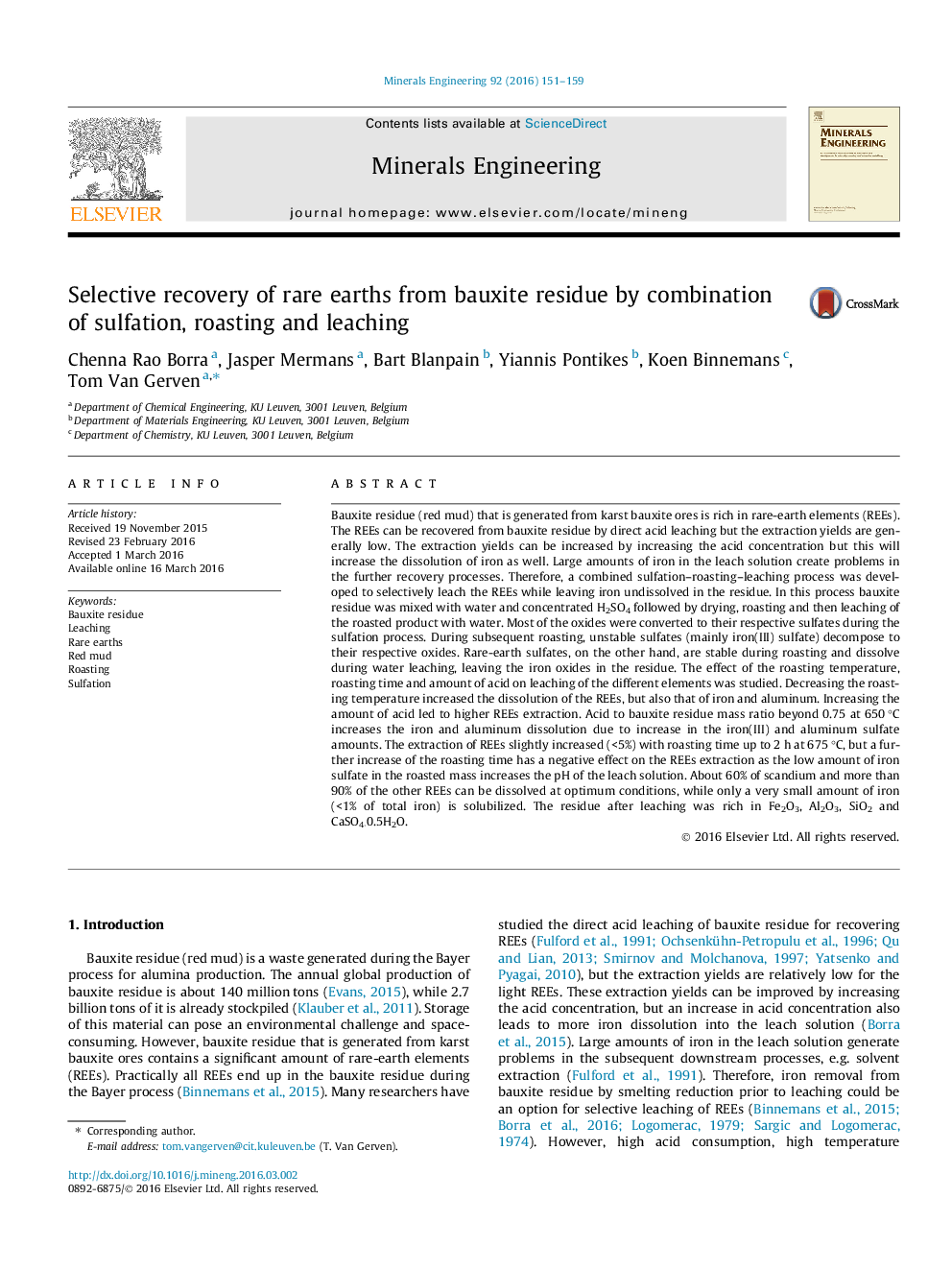| کد مقاله | کد نشریه | سال انتشار | مقاله انگلیسی | نسخه تمام متن |
|---|---|---|---|---|
| 232768 | 465303 | 2016 | 9 صفحه PDF | دانلود رایگان |
• Sulfation–roasting–leaching process was used for selective recovery of rare earths from bauxite residue.
• Most of the oxides were converted to sulfates during sulfation.
• Unstable sulfates (mainly iron(III) sulfate) were decomposed to oxides during roasting.
• About 60% Sc and more than 90% of the other rare earths can be recovered with low amount of Fe (<1%) in the solution.
• Residue after leaching can be used in cementitious binders.
Bauxite residue (red mud) that is generated from karst bauxite ores is rich in rare-earth elements (REEs). The REEs can be recovered from bauxite residue by direct acid leaching but the extraction yields are generally low. The extraction yields can be increased by increasing the acid concentration but this will increase the dissolution of iron as well. Large amounts of iron in the leach solution create problems in the further recovery processes. Therefore, a combined sulfation–roasting–leaching process was developed to selectively leach the REEs while leaving iron undissolved in the residue. In this process bauxite residue was mixed with water and concentrated H2SO4 followed by drying, roasting and then leaching of the roasted product with water. Most of the oxides were converted to their respective sulfates during the sulfation process. During subsequent roasting, unstable sulfates (mainly iron(III) sulfate) decompose to their respective oxides. Rare-earth sulfates, on the other hand, are stable during roasting and dissolve during water leaching, leaving the iron oxides in the residue. The effect of the roasting temperature, roasting time and amount of acid on leaching of the different elements was studied. Decreasing the roasting temperature increased the dissolution of the REEs, but also that of iron and aluminum. Increasing the amount of acid led to higher REEs extraction. Acid to bauxite residue mass ratio beyond 0.75 at 650 °C increases the iron and aluminum dissolution due to increase in the iron(III) and aluminum sulfate amounts. The extraction of REEs slightly increased (<5%) with roasting time up to 2 h at 675 °C, but a further increase of the roasting time has a negative effect on the REEs extraction as the low amount of iron sulfate in the roasted mass increases the pH of the leach solution. About 60% of scandium and more than 90% of the other REEs can be dissolved at optimum conditions, while only a very small amount of iron (<1% of total iron) is solubilized. The residue after leaching was rich in Fe2O3, Al2O3, SiO2 and CaSO4·0.5H2O.
Journal: Minerals Engineering - Volume 92, June 2016, Pages 151–159
